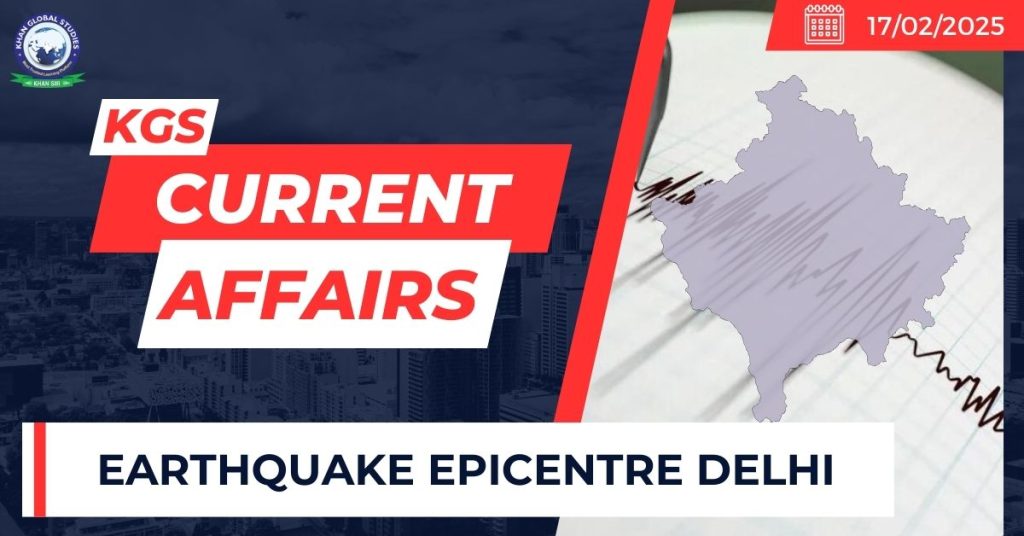Context:
Strong tremors were felt in the national capital and adjoining regions as an earthquake of 4.0 magnitude struck the region.
- Delhi’s quakes are linked to the Delhi-Haridwar ridge and Delhi-Moradabad faults, which have the potential for damaging earthquakes of up to magnitude 8 on the MSK scale.
- According to the National Center for Seismology the earthquake struck at a focal depth of five Km.
- Delhi has experienced only two seismic events in the past 295 years with epicenters in the city, though it has felt tremors and suffered damage from earthquakes in nearby regions.
- Since 1720 AD, Delhi has experienced five earthquakes with magnitudes between 5.5 and 6.7.
- Its location on multiple fault lines makes it vulnerable to severe earthquakes.
- Seismic activity in North India, including the Himalayas, results from the ongoing collision between the Indian and Eurasian plates for the past 50 million years.
Earthquake in Delhi
- It is about 250 Km from the seismically active Himalayan region and often experiences tremors from both nearby and distant earthquakes.
- It is located in Seismic Zone IV, which is the second-highest risk level in India.
- The city faces moderate to high risk due to the potential of Himalayan earthquakes, and its seismic zoning may change as more data becomes available.
- Zone IV generally experiences earthquakes with magnitudes of 5-6, but can occasionally have larger ones (6-7 or even 7-8).
Seismic Mapping Zone of India

- According to the seismic zoning map around 59% of India’s land is prone to earthquakes of varying intensities.
- Seismic Zonation map of the country (state wise) given by Bureau of Indian Standards (BIS) has categorised into several seismic zones (Zone II to Zone V) divided into four zones:
- Zone V is the most seismically active (i.e. Northeastern India, parts of Jammu & Kashmir, Himachal Pradesh, Uttaranchal, Rann of Kutch (Gujarat), North Bihar, and Andaman & Nicobar Islands)
- Zone IV (i.e. Jammu & Kashmir, Himachal Pradesh, Delhi, Sikkim, etc.)
- Zone III (i.e. Rajasthan, Madhya Pradesh, Bihar, Jharkhand, etc.)
- Zone II is the least active (remaining areas of the country)
- About 11% of the country is in Zone V, 18% in Zone IV, 30% in Zone III, and the rest in Zone II.
- West Bengal is mainly in Zone III, with parts in Zones IV and II.
- Uttar Pradesh is in Zones IV, III, and II.

